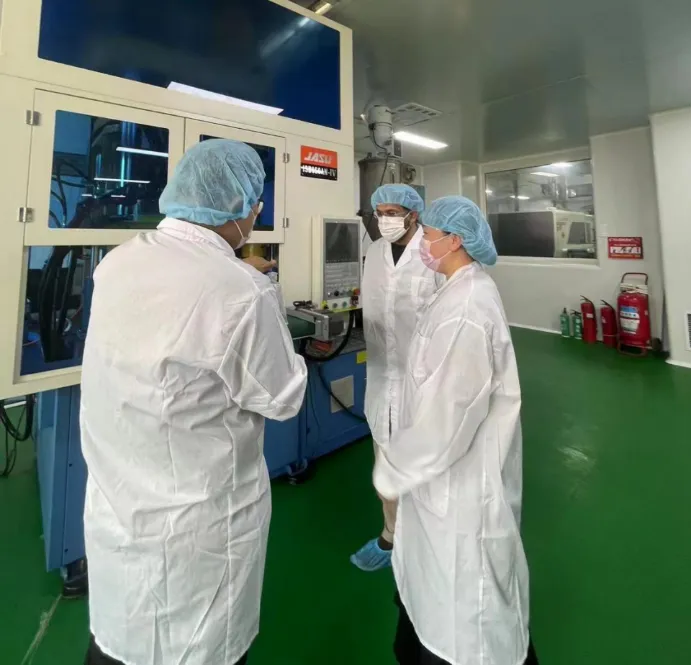petri dish uses laboratory
The Uses of Petri Dishes in the Laboratory
Petri dishes are fundamental tools in many laboratory settings, predominantly utilized in microbiology. Named after the German bacteriologist Julius Richard Petri, who invented the dish in the late 19th century, these shallow, flat, cylindrical containers have become indispensable for a variety of scientific applications. Their primary purpose is to culture microorganisms, although their utility extends far beyond this primary function.
Culturing Microorganisms
The most prominent use of Petri dishes is in the culturing of bacteria, fungi, and other microorganisms. When a sample containing microorganisms is placed on a nutrient agar medium within a Petri dish, the organisms can proliferate, allowing researchers to observe their growth patterns, morphology, and behavior. This process is crucial for identifying pathogens, studying environmental samples, and performing biochemical tests. The transparent nature of the dish allows for easy visualization, and the shallow design offers ample surface area for microbial growth.
Antibiotic Sensitivity Testing
Petri dishes are also central to antibiotic susceptibility testing. The disk diffusion method, commonly known as the Kirby-Bauer test, involves placing antibiotic-impregnated disks onto an agar plate inoculated with a bacterial lawn. As the bacteria grow, the antibiotics diffuse radially, creating inhibition zones around the disks. The size of these zones helps determine the effectiveness of the antibiotics against specific bacterial strains. This application is essential in clinical settings, where determining the appropriate antibiotic can significantly influence treatment outcomes.
Environmental Monitoring
petri dish uses laboratory

In addition to clinical microbiology, Petri dishes play a vital role in environmental studies. Researchers use them to collect and analyze microbial populations from various environments, including soil, water, and air. Specially formulated media can isolate specific groups of microorganisms, enabling studies on biodiversity, bioremediation, and the impact of pollutants on microbial communities. Understanding these interactions is crucial for environmental conservation and management.
Cell Culture
Beyond microbial applications, Petri dishes are also used in cell culture. While traditionally associated with bacterial growth, these dishes serve as a reliable platform for growing plant and animal cells under controlled conditions. Nutrient media can be optimized for various cell types, allowing researchers to study cell behavior, drug effects, and genetic modifications. This application is particularly relevant in biotechnology and pharmaceutical research, where the development of new therapies relies on effective cell culture techniques.
Educational Uses
In educational settings, Petri dishes are invaluable tools for teaching microbiology and biology. Students can perform simple experiments, such as observing colony growth and testing the effects of disinfectants or environmental factors on microbial populations. These hands-on experiences enhance understanding and encourage interest in the sciences, making Petri dishes essential resources in laboratories around the globe.
Conclusion
The Petri dish has proven to be an essential component of laboratory work across a range of scientific disciplines. Its versatility, simplicity, and effectiveness make it a preferred choice for culturing microorganisms, performing antibiotic sensitivity tests, and facilitating cell culture. Moreover, Petri dishes play a significant role in environmental monitoring and education, further demonstrating their multifaceted applications. As research continues to evolve, the Petri dish remains a cornerstone of scientific inquiry, reflecting both the historical significance of its invention and its continued relevance in modern laboratories. The humble dish symbolizes the intersection of innovation and discovery, allowing scientists to explore the unseen world of microorganisms that play a critical role in our health, environment, and beyond.
-
Aesthetic Makeup Spray Bottles | Fine Mist Empty RefillableNewsAug.19,2025
-
White Plastic Veterinary Vaccine Vials | Lab Liquid BottlesNewsAug.18,2025
-
Plastic Medicine Liquid Bottle: Secure Flip Top Drug VialsNewsAug.17,2025
-
Durable 250ml Blue Plastic Vaccine Vial for Lab & Vet UseNewsAug.16,2025
-
Sterile Virus Sample Tubes: Secure & Reliable Specimen CollectionNewsAug.15,2025
-
White 250ml Plastic Vaccine Vial for Lab & Vet MedicineNewsAug.14,2025
























